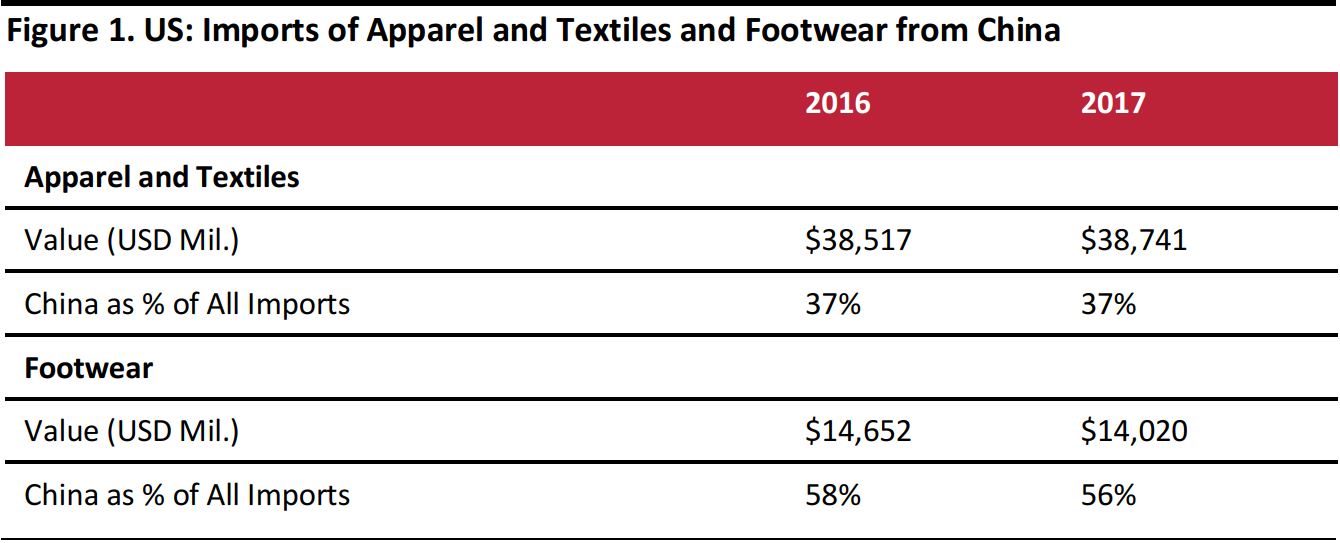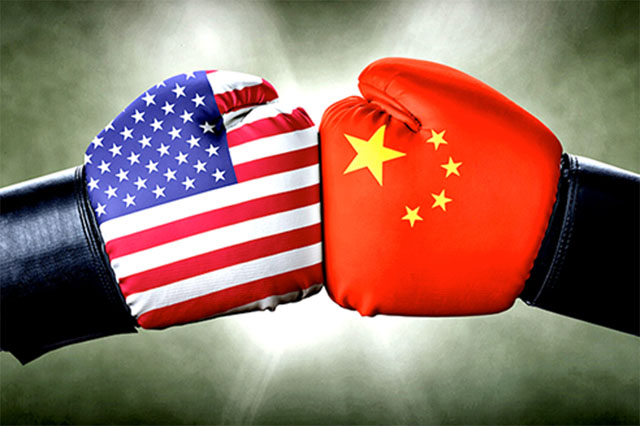Tariff War Reignites
The tariff war between the US and China has reignited. On June 15, the US announced new tariffs of 25% on $34 billion worth of imports from China. The tariffs will take effect on July 6 and will impact 818 product categories that include industrial machinery and parts thereof; parts of electronic devices and electrical parts such as fuses and resistors; and trains, planes, helicopters and automobiles. In May, US President Donald Trump specified that new tariffs should apply to $50 billion worth of imports from China that contain “industrially significant technologies.”
Most consumer products, including apparel and many consumer electronics products, are not on the US Trade Representative’s list of items subject to new tariffs. The biggest import category facing new tariffs is automobiles, and the US imported some $3.5 billion worth of passenger cars from China in 2017, according to US International Trade Commission data cited by the
Financial Times.
Some 515 items have been removed from an initial list of 1,333 items under consideration for new tariffs that was published in early April. A second list of 284 categories comprising $16 billion worth of imports will go out for public consultation before the US decides if it will introduce tariffs on those items at a later date. Adding tariffs on that second list of items would bring the total up to the requested $50 billion in imports subjected to new tariffs.
The US Trade Representative stated that the action followed an investigation into whether “China’s acts, policies and practices related to technology transfer, intellectual property and innovation” were unreasonable or discriminatory or burdened US commerce.
Regarding the move to apply new tariffs, the US Trade Representative stated:
It generally focuses on products from industrial sectors that contribute to or benefit from the “Made in China 2025” industrial policy, which include industries such as aerospace, information and communications technology, robotics, industrial machinery, new materials, and automobiles. The list does not include goods commonly purchased by American consumers such as cellular telephones or televisions.
Following the US’s announcement on June 15, China’s Ministry of Finance responded later in the day by stating that it would impose tariffs of 25% on 545 categories of imported US products worth $34 billion beginning July 6. China also threatened to introduce tariffs on a further $16 billion of US imports. In April, China had indicated that categories of US imports including soybeans, whiskey and beef would face tariffs.
The First Phase
Below are the key developments from the previous phase of tariff conflicts between the US and China.
- In early March, President Trump announced tariffs of 25% on steel and of 10% on aluminum imported into the US from China and other countries.
- On April 2, China responded with tariffs of up to 25% across 128 US product categories, including fruit, pork, steel pipes and ethanol.
- On April 3, the US revealed plans to apply 25% tariffs to 1,333 product categories imported from China for sale in the US. These included industrial machinery and parts thereof, electronic components, specialist electronic equipment, and medical devices. This plan will be open to a public consultation.
- On April 4, China announced that it plans to impose tariffs of 25% on $50 billion worth of US exports across 106 categories that include chemicals, cars and soybeans.
- On April 5, Trump said that he had instructed the US Trade Representative to consider whether additional tariffs on $100 billion worth of imports would be appropriate, and to identify products on which it could impose those tariffs.
- On April 6, China’s Ministry of Commerce responded by stating that it “does not want to fight a trade war, but [is] not afraid to fight a trade war.”
- On May 29, President Trump stated that the US Trade Representative would announce by June 15 the imposition of an additional 25% duty on approximately $50 billion worth of Chinese imports.
Apparel Again Not Directly Impacted
In the US, automobile imports look set to take the greatest hit from the new tariffs, but the bulk of the products to which the new import charges apply are not the types of goods that consumers typically buy. Clothing and footwear have again escaped from tariffs, to the benefit of US retailers and consumers. Should apparel be pulled into the trade war, the impact on consumers will be substantially bigger than what we expect to see from the tariffs that will be applied to cars.
In 2017, the US imported almost $39 billion of apparel and textiles from China, plus some $14 billion of footwear. In aggregate, these categories would be bigger than all of those to which tariffs will be applied on July 6.
 Source: US Department of Commerce International Trade Administration
Source: US Department of Commerce International Trade Administration

 Source: US Department of Commerce International Trade Administration
Source: US Department of Commerce International Trade Administration